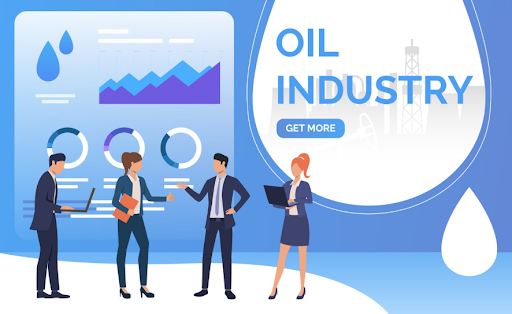
Oil platforms represent some of the most challenging and potentially hazardous work environments on Earth. These massive structures, standing alone in vast expanses of ocean, house hundreds of workers who extract petroleum from beneath the seabed. The question of safety on these installations is complex, involving multiple layers of risk management, regulatory oversight, and technological advancement that have evolved significantly over decades of offshore drilling operations.
Understanding the Risks
Offshore oil platforms face unique safety challenges that distinguish them from land-based industrial facilities. The marine environment presents constant threats from severe weather conditions, including hurricanes, storms, and high seas that can damage equipment and endanger personnel. The isolation of these platforms means that emergency response times are extended, making immediate medical care and evacuation procedures critical considerations in safety planning.
The presence of flammable hydrocarbons creates inherent fire and explosion risks that require constant vigilance. High-pressure systems, heavy machinery, and the corrosive marine environment add additional layers of complexity to maintaining safe operations. Workers must navigate these hazards while performing physically demanding tasks, often in challenging weather conditions and at considerable heights above the ocean surface.
Regulatory Framework and Safety Standards
The offshore oil industry operates under strict regulatory oversight designed to minimize risks and protect workers. In the United States, the Bureau of Safety and Environmental Enforcement (BSEE) establishes comprehensive safety regulations that cover everything from equipment standards to emergency response procedures. These regulations require regular inspections, maintenance schedules, and safety training programs for all personnel working on offshore installations.

International standards also play a crucial role, with organizations like the International Maritime Organization (IMO) and the International Association of Oil and Gas Producers (IOGP) developing global best practices. These standards address structural integrity, fire protection systems, personal protective equipment, and evacuation procedures that must be implemented across offshore operations worldwide.
Technological Advances in Platform Safety
Modern oil platforms incorporate sophisticated safety technologies that have dramatically improved worker protection over the past several decades. Advanced fire suppression systems can detect and respond to incidents within seconds, while improved structural designs better withstand extreme weather conditions and potential impacts. Real-time monitoring systems track everything from gas concentrations to structural stress, providing early warning of potential problems.
Digital technologies have revolutionized safety management through predictive maintenance programs that identify equipment failures before they occur. Automated systems can shut down operations and initiate emergency procedures faster than human operators, while improved communication systems ensure that workers can quickly report hazards and coordinate responses.
Training and Human Factors
The human element remains central to platform safety, with comprehensive training programs preparing workers for the unique challenges of offshore operations. These programs cover not only technical skills but also emergency response procedures, safety protocols, and hazard recognition. Regular drills ensure that crews can respond effectively to various emergency scenarios, from fires and explosions to severe weather events and medical emergencies.
Safety culture plays an equally important role, with successful platforms fostering environments where workers feel empowered to report hazards and stop work when conditions become unsafe. This culture of safety awareness has proven essential in preventing accidents and maintaining high safety standards across offshore operations.
Statistical Analysis of Platform Safety
Industry statistics reveal significant improvements in offshore safety over recent decades. The frequency and severity of incidents have declined substantially as operators have implemented better safety management systems and invested in improved technologies. However, when accidents do occur on oil platforms, they can result in serious injuries due to the hazardous nature of the work environment and the types of equipment involved.
Data from regulatory agencies shows that the most common types of incidents involve slips and falls, equipment malfunctions, and exposure to hazardous substances. While fatality rates have decreased, the potential for severe injuries remains a constant concern that drives continued investment in safety improvements and training programs.
Emergency Response and Medical Care
The remote location of oil platforms necessitates comprehensive emergency response capabilities that can function independently of shore-based services. Platforms maintain medical facilities staffed by trained personnel capable of handling various injuries and medical emergencies. Helicopter evacuation services provide critical links to advanced medical care when serious injuries occur.
Emergency response plans address multiple scenarios, including fires, explosions, severe weather, and medical emergencies. These plans require regular testing and updating to ensure effectiveness, with coordination between platform personnel, coast guard services, and medical facilities playing crucial roles in emergency management.
Legal Considerations and Worker Rights
Workers injured on oil platforms have specific legal protections under maritime law, including coverage under the Jones Act and general maritime law. These protections recognize the unique hazards of offshore work and provide avenues for compensation when injuries occur due to negligence or unsafe conditions. Understanding these rights is essential for offshore workers and their families.
When serious injuries do occur, maritime injury lawyers specializing in offshore incidents can provide crucial guidance through complex legal proceedings. Firms like ChopinLawFirm.com, maritime injury lawyers , have extensive experience handling cases involving oil platform accidents and can help injured workers navigate the specialized legal framework that governs maritime injuries.
Future of Platform Safety
The offshore oil industry continues to invest heavily in safety improvements, driven by regulatory requirements, economic considerations, and ethical responsibilities to protect workers. Emerging technologies, including artificial intelligence and advanced materials, promise further enhancements to platform safety systems.
However, the fundamental challenges of offshore operations remain unchanged. The marine environment, the presence of hazardous materials, and the isolation of platforms will continue to present safety challenges that require constant vigilance and ongoing investment in protective measures.
Oil platforms have become significantly safer over the decades through technological advancement, improved regulations, and enhanced safety cultures. While risks remain inherent to offshore operations, the industry's commitment to safety continues to evolve, providing better protection for the thousands of workers who depend on these installations for their livelihoods. Understanding these safety measures, along with legal protections available to workers, remains essential for anyone involved in offshore oil operations.



